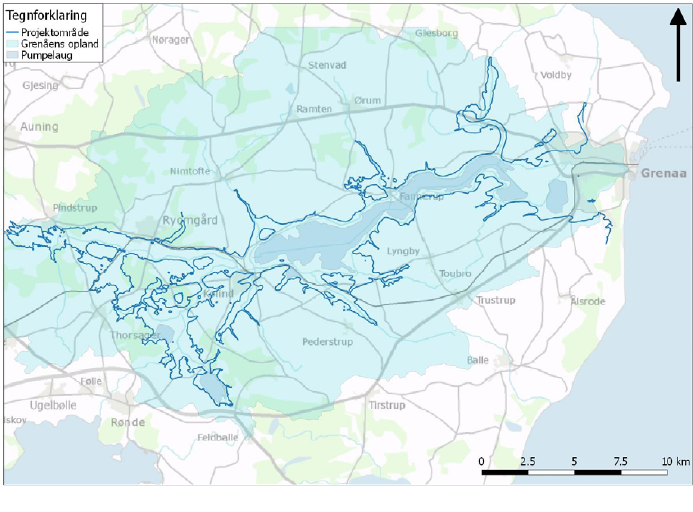In the towns alongside the watercourses of Kolindsund and Grenaa, climate change have major implications – not least in relation to the areas used for agricultural production and in the meadow areas along the river basins. Taking into account the present land use, future climate changes (more precipitation, greater quantities of water in catchments, rising groundwater, rising water level in Kattegat and – possibly – salt water intrusion), as well as cost-benefit and societal analyses, a number of realistic CCA scenarios will be analysed to provide a robust and valid basis for political decision-making. This action is primarily linked to developing tools within the whole hydrological circle.
Main responsible beneficiary: Norddjurs Municipality
Number of days estimated spent on action in phase 1: 285 Days
Budget: 1.064.250€
Beneficiaries responsible for implementation: Syddjurs Municipality (SDK) and Norddjurs Municipality (NDK)
Role of Norddjurs Municipality
- Is the project-leader
- Works with stakeholders: Aqua Djurs, Syddjurs Spildevand, other wastewater companies, landowners, drainage associations, NGOs etc.
- Serves a Steering Committee (composed of Syddjurs and Norddjurs project-leaders, technical directors and politicians) and a Monitoring Group (composed of wastewater companies, Kolidsunds Venner, drainage associations, possibly politicians)
- Feeds into homepage and project portal to ensure local ownership and political consensus
-
Reports and cooperates with C2C CC PM and other C actions
Relation to Climate Change Adaption (CCA) plans
- Norddjurs CCA plan
- Syddjurs CCA plan

